Japanese samurai artillery
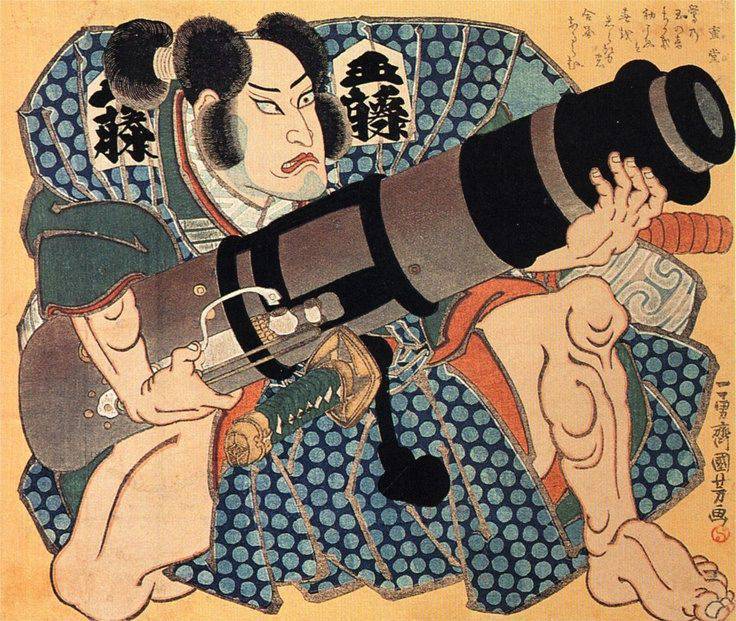
And here the Japanese artist Utagawa Kuniyoshi clearly overdid it. The return of such a tool will be too great for a person, no matter how strong he is! True, it is known that in this case on this woodcut depicts a theatrical actor playing the role of a samurai. That is, it can be a theatrical accessory, and its size is so large that it can be clearly seen from the stage!
But the exploding shells were known to them long before that time. The first bombs filled with gunpowder were used against them by the Mongols, when they tried twice to conquer Japan in the 13th century. The terrible weapon caused shock and panic, because the Japanese had not yet encountered such a thing, but soon they themselves had learned to use shells filled with gunpowder, which were thrown at the enemy’s location using the simplest stone-throwers made according to the Chinese model. The 14th century engraving came to us, in which the artist, Takedzaki, depicted the explosion of one of these “thunder balls”. It is clearly seen that the upper half of it explodes when fragments explode, and the lower one still flies, spewing smoke and flames. The Japanese used bombs that weighed 71,6 kg and threw them at 200 meters ...
For some reason, these shells had the shape of an egg, and a tube with a wick inside and a double wheel at the end passed through it, while at the other end there was a handle for which it was held when carried to the throwing machine. It is obvious that the charge of gunpowder in this bomb was quite large. As for the throwing machines themselves, they were very simple in design: a long lever, to the shorter part of which many ropes were attached. The lever was retracted, this projectile was inserted into the belt loop at its end, after which people took the ropes and ran together on command. The lever turned, and the bomb flew at the target. Obviously, the effectiveness of such a “bombet” strongly depended on the physical strength of people and also their number. The Mongols used to use prisoners who were mercilessly exploited, but in Japan this function was performed by samurai of lower ranks and ashigaru. One can only be surprised at how smoothly and tirelessly they worked, and with those truly inhuman efforts that were spent at the same time.
Having started the war in Korea, the samurai faced Chinese bronze artillery there, and the Korean admiral Lee Sun Xing used at all explosive bombs against them, which were fired with guns, which was a novelty at that time.
In 1600, the first English ship landed on the shores of Japan, and now his skipper William Adams (see the movie “Shogun”), was just brought to Ieyasu Tokugawa by the first European cannons. It seems that, according to reports of that time, Ieyasu Tokugawa had Osaka’s Xnumx guns during the siege, and they fired continuously. But it is unlikely that all these guns were of European production. But the fact is that it is also known that he bought the first few guns from Adams, who happened to be in Japan just before the battle of Sekigahara. The fact that he managed to win the trust of Ieyasu, who found him a “charming interlocutor,” opened the way for other Englishmen to this country. Thus, the head of the British trade mission, Richard Kok, settled in Hirado, William Eaton opened a trading post in Osaka, and Richard Wickam - in Edo. So, Wickam wrote to Eton in Osaka 300 on July 4 of the year that “Captain Adams sold guns and ammunition to Ieyasu”, and 1614 of December of the same year reported in a letter to London that he bought “four souvenirs and one saker for 5 gold coins and 1400 barrels of gunpowder for 10 ... ". These can be used to shoot 180 kg (8 pounds) weighing cores, and Sacker - 17,5 kg (2,5 pounds). The firing range was approximately 5,5 -1500 m. 1600 guns Ieyasu transferred the Dutch, so his artillery, operating under Osaka, most likely was not so numerous. Hideri had guns in the castle too, but Stephen Turnbull believes that he had bastard-loaded Portuguese guns of an obsolete type, which the Japanese called furanki, and that their effectiveness could not be compared with the more modern muzzle-charged guns of Ieyasu Tokugawa.
However, the number of guns and the one and the other could be increased by Japanese guns, made of ... wood. They consisted of drilled wooden trunks wrapped in rattan harnesses. Of course, they could not fire metal cores, which tightly entered the trunk, and destroy the walls. But with their help, it was possible to shoot wooden shells filled with combustible substances and causing fires. But on the attacking infantry they could easily shoot a canister, which also gave a certain effect.
Interestingly, the idea of such guns was revived again after many centuries! The Japanese themselves used them during the siege of Port Arthur, and during the First World War, log trunks of decks wrapped with metal wire were used in the German army in a positional war. A primitive gun carriage, the simplest devices for aiming at a target - and here you have a mortar or bomb to shoot at short distances. It is clear that they could not shoot tightly entering the smooth barrel of shells, but cylindrical cans ... from under the marmalade, supplied with a slowly burning wick, could be used in them! The wick was set on fire, the can was lowered into the barrel and fired. Thus, it was possible to throw this "projectile" on 100-200 m, and more than that was not required! And about the same used Japanese wooden guns of the Tokugawa era. Only as shells for them used hollow bamboo tubes of suitable thickness.
In addition to guns, the arrows of the Tokugawa and Hideyori armies used heavy muskets, often differing in phenomenal size. A three-meter-long rifle is known, so it’s not surprising that one could even shoot 1,5 km from such rifles! The shots of the embrasures that were hiding behind the walls and shooting through the small embrasures hidden in their depths were simply deadly, only loading such guns was extremely inconvenient, because their fire was very rare on both sides.
The Japanese also knew about the appearance in Europe in the second half of the 17th century of the baginet bayonets, which were inserted into the hole of the trunk. Two types of such weapons were manufactured: the sword-like bayonet juken and the spear-shaped juso. Here are just widespread and they also did not receive, primarily because any improvement in firearms undermined the power of the samurai class and was very disapprovingly perceived by the government and public opinion.
Interestingly, in the Japanese arsenal there were also rather strange “hand guns” - “kakae-zutsu”, which were something like an analogue of European hand-held gunners for firing grenades - a sort of hybrid between them, of a very large caliber, with a rather short barrel and pistol grip. Probably, it was only possible to shoot from them with a canister, since there would hardly have been a person who could withstand the recoil of this weapon, if they had shot the core from it! True, Japanese woodcut artists loved to depict samurai and theater actors, but (depicting samurai!) With this kind of weapon in their hands. However, judging by the artifacts that have reached us, their images are nothing more than the fruit of their artistic imagination, or it was just a theatrical props, emphasizing, so to speak, the “power” of this warrior and the fact that “modern trends” did not pass by him either!
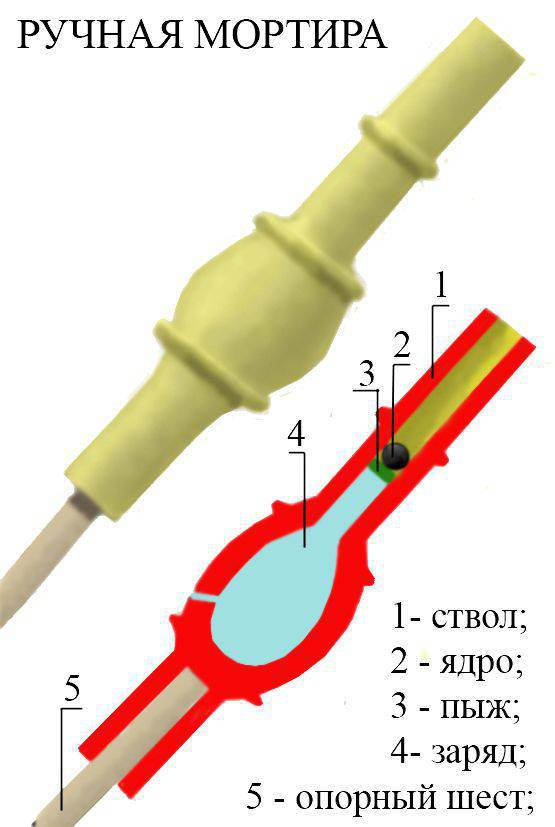
Kakae-zutsu - real sample
But the real guns were not learned by the Japanese to produce, or rather learned, but too late. So in the arsenal of Japanese samurai guns were very few. During the fierce wars for power over the country in the late XVI - early XVII centuries. they had to buy them from the Dutch and the British. However, they showed traditional Japanese ingenuity here too and instead of bronze implements they began to craft cannons from wood! They took for this the usual log of hard wood, drilled a hole in it, then outside, like a bow, wrapped it with a wicker rattan. Of course, it was unthinkable to shoot such cannonballs, but with the incendiary mixture inside them - and with incendiary projectiles in the form of cylinders made of bamboo!
Interestingly, the Japanese also used cannons bought from foreigners in their own way, mainly as siege weapons and ... did not use gun carriages similar to European ones! Instead of them, something like an inclined ramp was made of bundles of rice straw for the gun barrel, on which it was laid. Recoil was perceived as wooden stakes driven into the ground by the principle of early European bombardments. Vertically, the gun was built by placing the same bundles of rice straw under it, and horizontally - with the help of ropes tied to the trunk, for which, at the command of the officer-commander of the gun, his servants pulled one way or the other! Primitive rocket launchers were also used, so that, in general, the Japanese had a rather varied arsenal of various shooting devices. That's just the samurai themselves do not complain about firearms. It was just a few days that every peasant could masterly learn how to shoot the same wick gun, but it took years of hard training to perfectly use a sword and a spear and shoot a bow!
[Center]
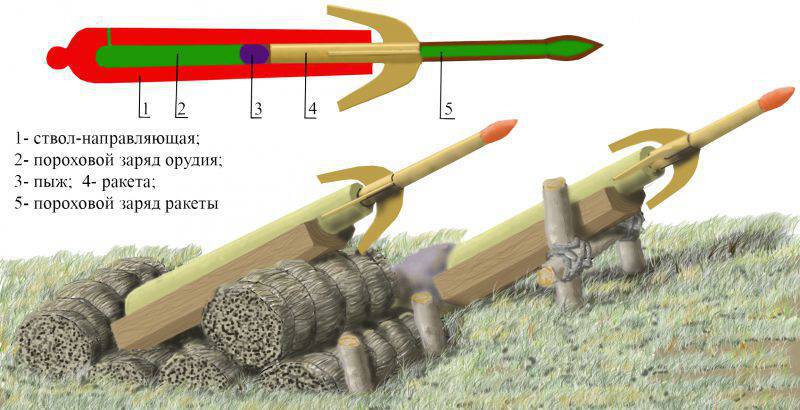 [
[Japanese rocket launchers/ center]
Author drawings A. Sheps
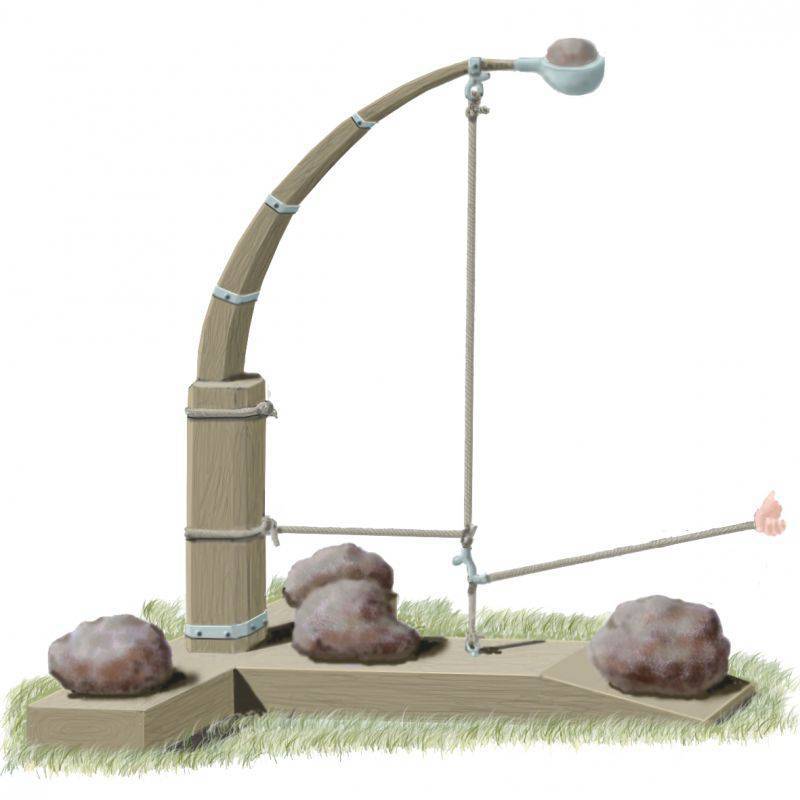
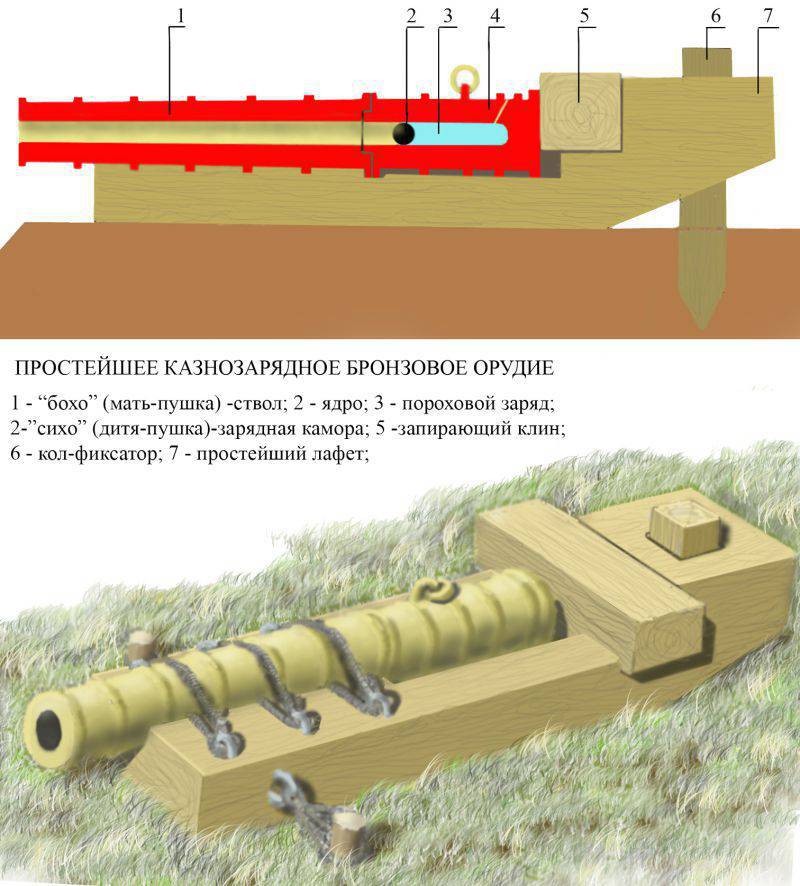
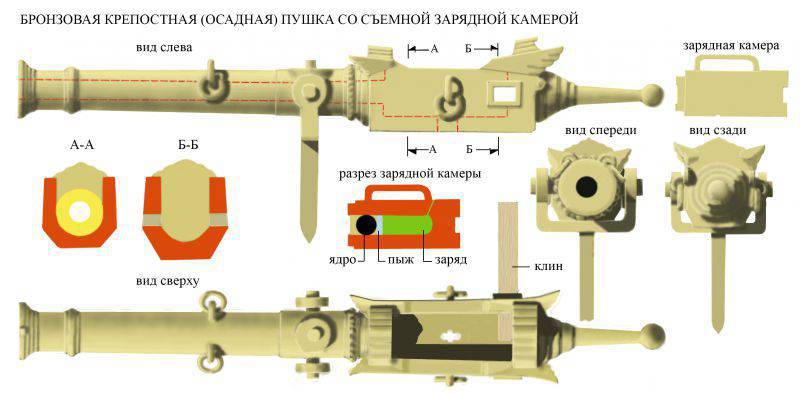
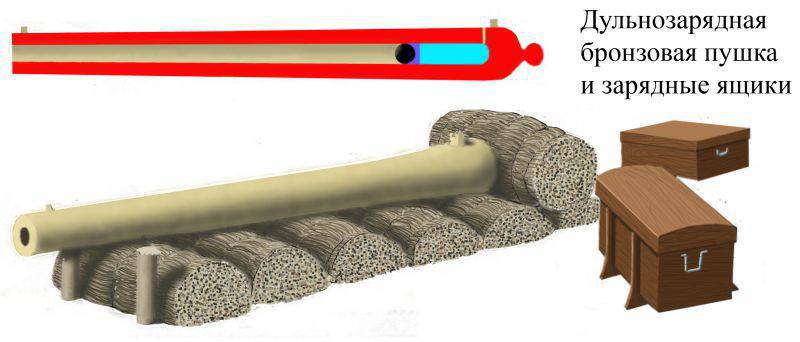
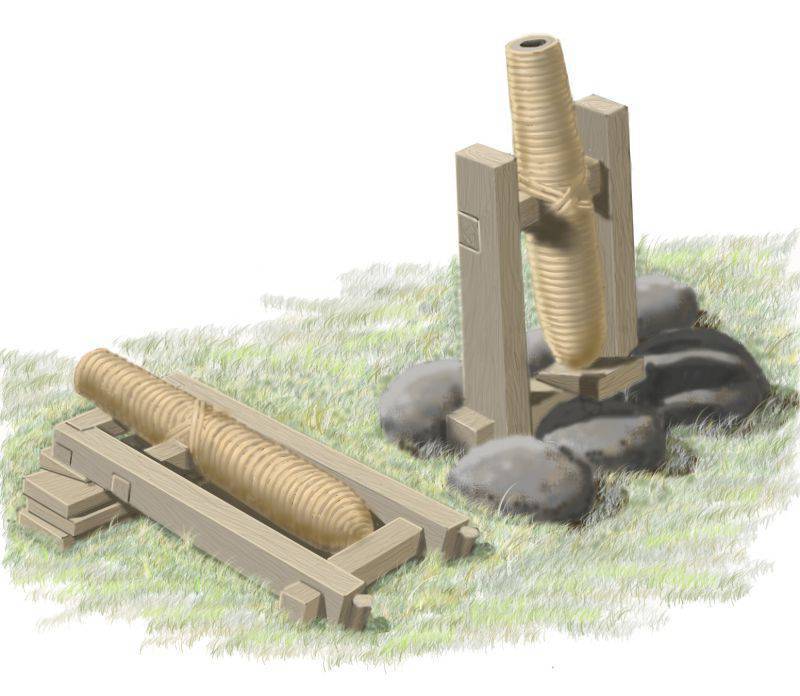
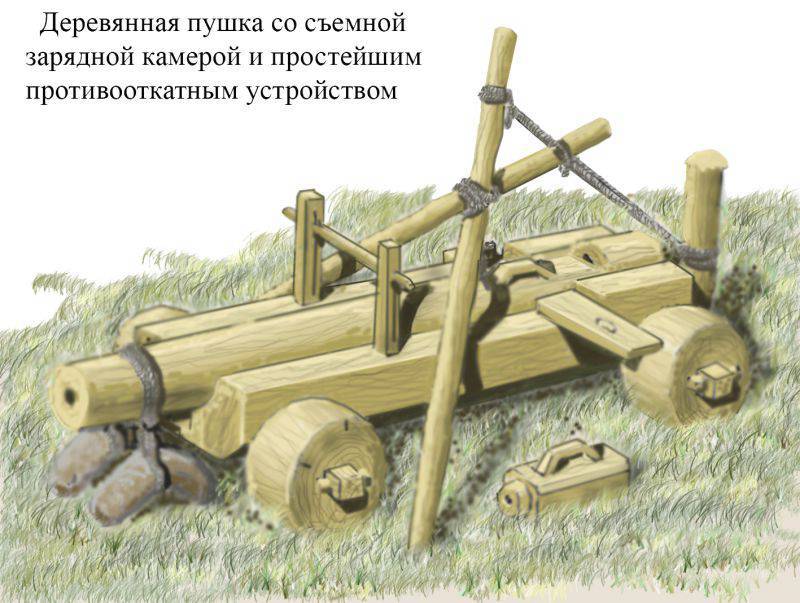
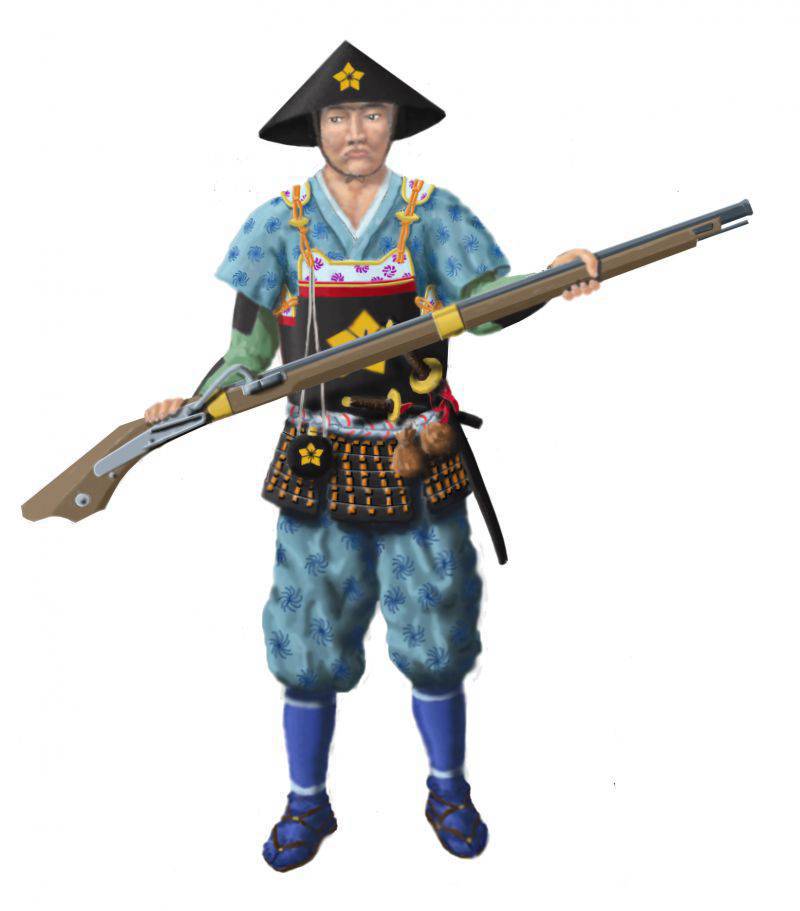
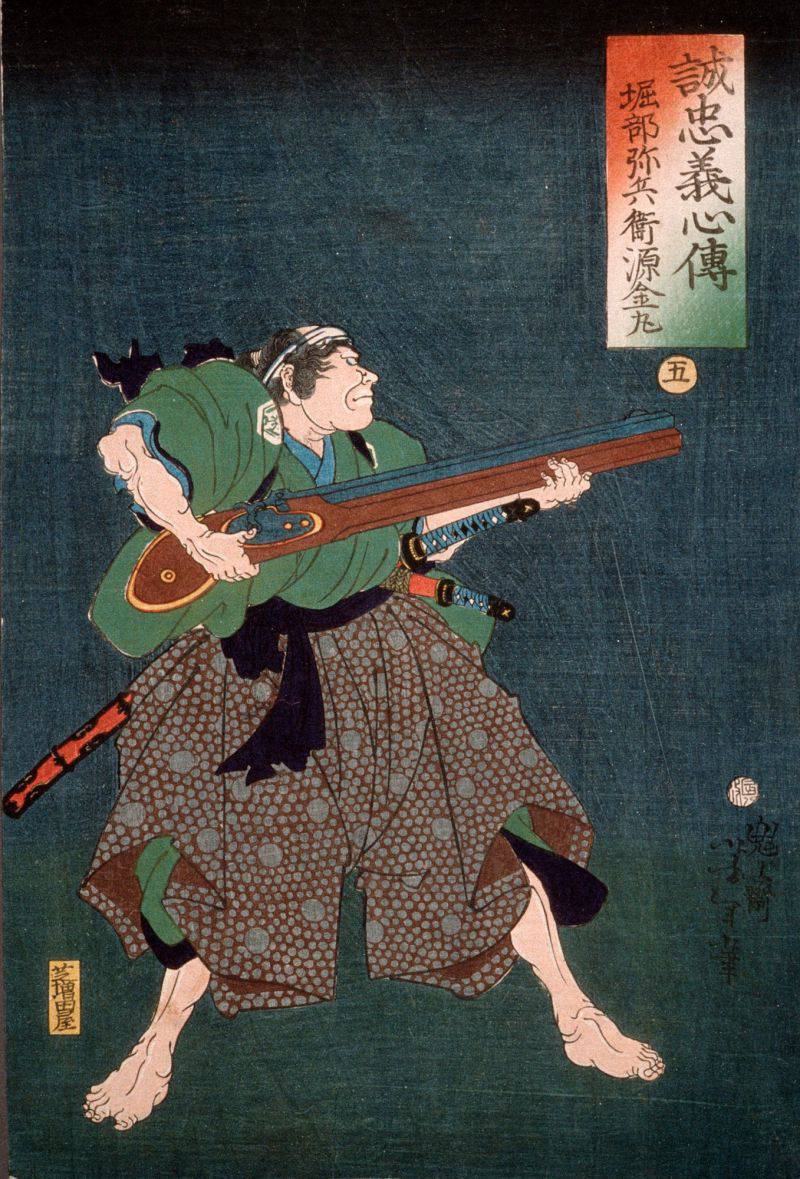
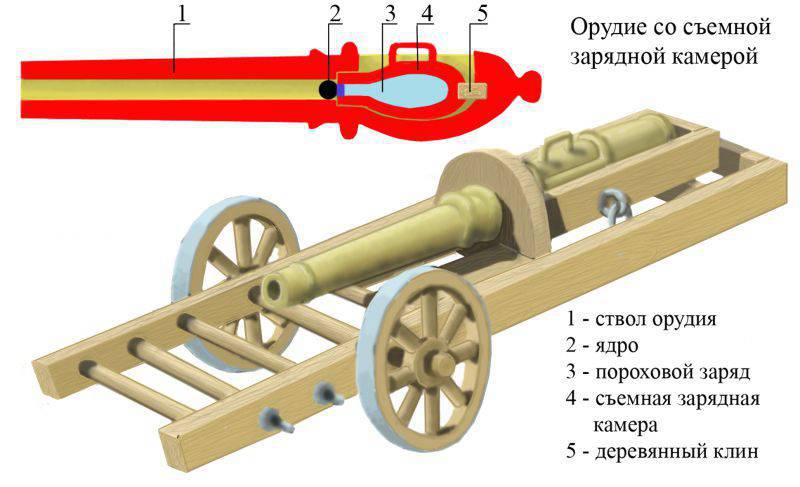
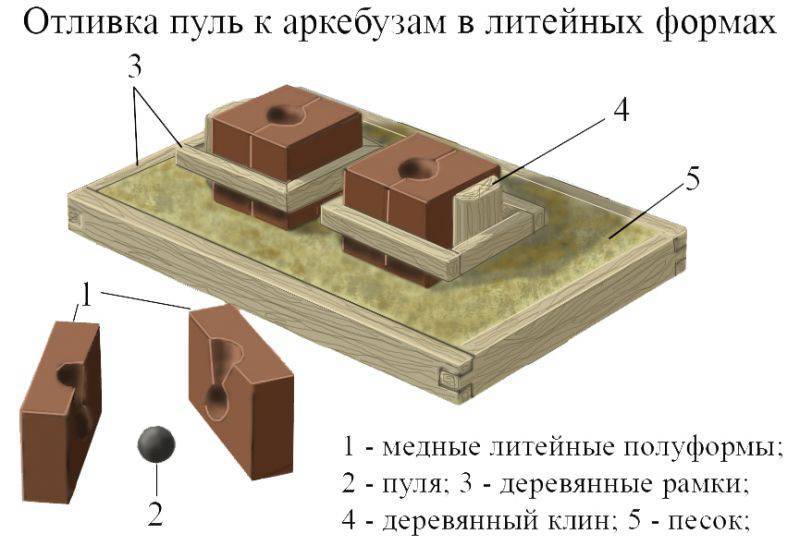
Information